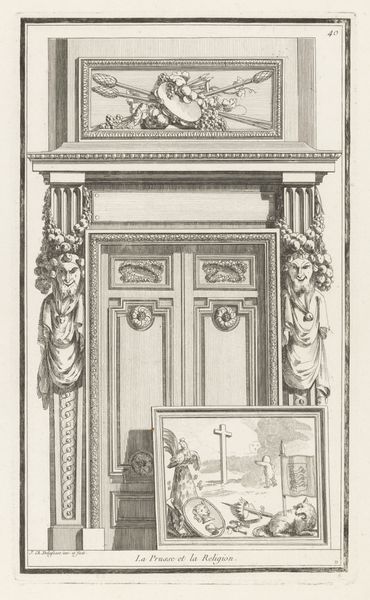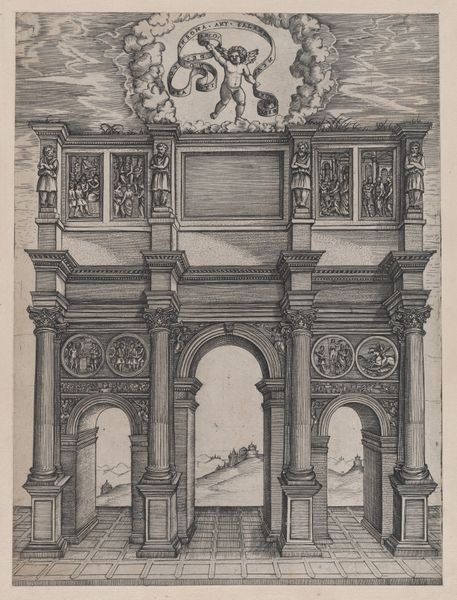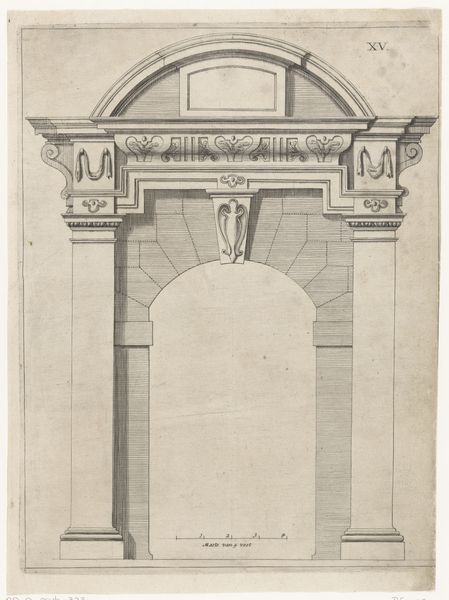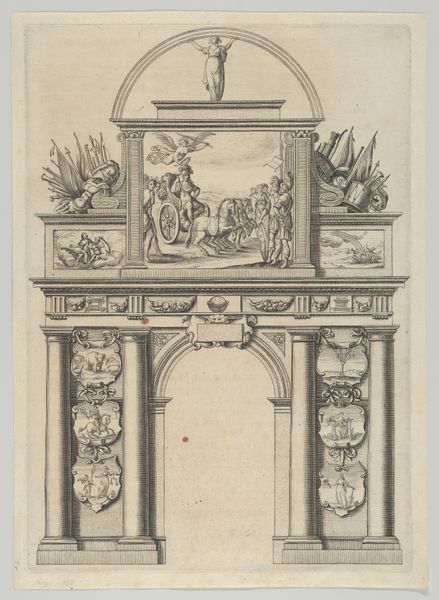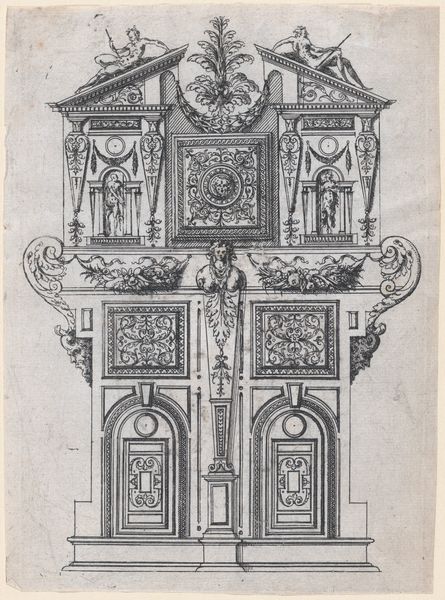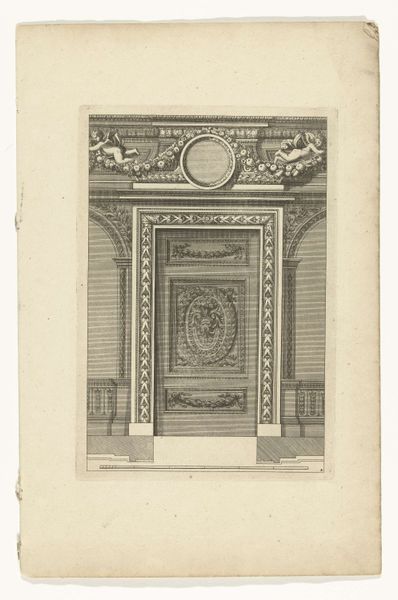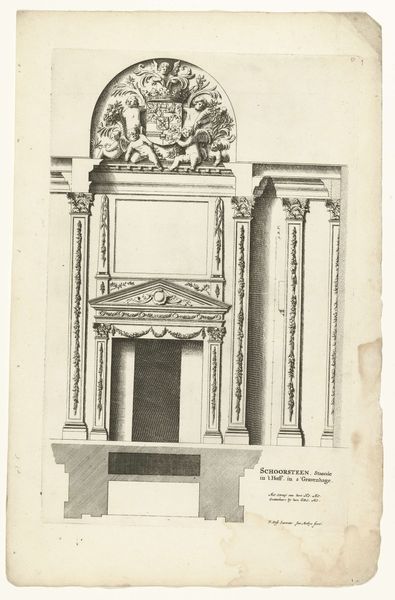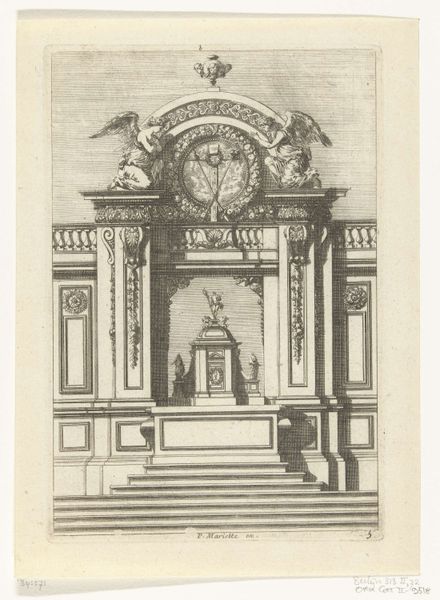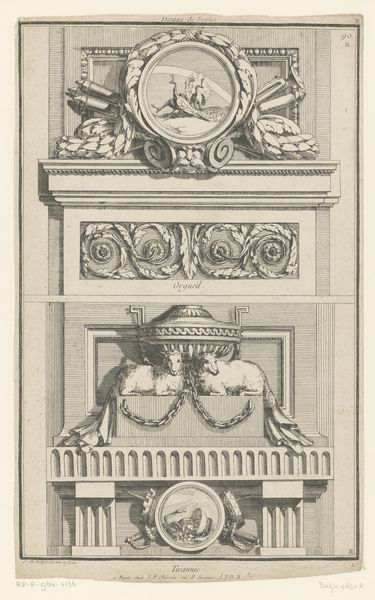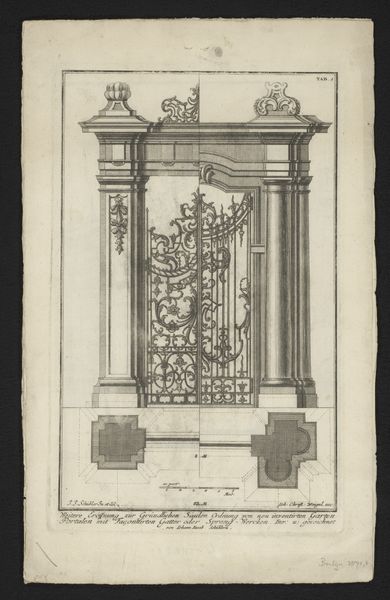
Speculum Romanae Magnificentiae: The Pediment Base of Trajan's Column 1530 - 1580
0:00
0:00
drawing, print, etching, engraving, architecture
#
drawing
# print
#
etching
#
romanesque
#
history-painting
#
armor
#
engraving
#
architecture
Dimensions: sheet: 12 5/8 x 9 1/4 in. (32 x 23.5 cm) plate: 11 15/16 x 7 15/16 in. (30.4 x 20.2 cm)
Copyright: Public Domain
Curator: My goodness, the intricacy! It almost vibrates with detail. This engraving from between 1530 and 1580 offers a glimpse of the base of Trajan's Column. Did you get all that? Editor: Yes, the “Speculum Romanae Magnificentiae: The Pediment Base of Trajan's Column," quite a mouthful. Immediately I’m struck by how it encapsulates power dynamics through architectural documentation. What does it evoke for you on a personal level? Curator: I keep thinking of doors – both the central one, ajar, but also the doorways into history. It’s Romanesque in style, obviously, but through the print medium it's more like a key to the past for the Renaissance. The etchings feel both delicate and monumental, simultaneously, how about that? Editor: Absolutely. This isn't just about architectural documentation, though; it's a statement. Note how the Roman reliefs contrast against the column, a very powerful symbol of authority and Roman expansionist policies. The armor on either side of the door reminds one of the violence on which the state was built. Curator: True, those details of armor… grim trophies! But the angels hovering, each presenting the tablet with dedicatory inscription, they almost soften the impact, don't they? It’s like… a visual olive branch. It is a really strong contrast! Editor: It does seem there is a tension present, between imperial dominance and what we might call divine legitimization, but look at where that supposed softness and divinity are placed. They flank either side of the text reinforcing it! Curator: Point taken. One can’t unsee the strategic intent there. Knowing that the original Trajan's Column was all about celebrating military victory in Dacia, I start thinking that even with a new artistic medium it also represents continuity. Editor: Precisely. So this artwork goes further than just an architectural representation, by examining Rome, we start also evaluating social hierarchy, the control, the militarism, and the overall politics in the 16th century. Curator: I leave pondering whether these printmakers appreciated the irony inherent in reproducing, and by reproducing implicitly questioning, imperial power structures through their art. Thank you. Editor: Thank you. Looking closely allows us to question established notions, offering space for reflection and possibly more thoughtful, fair views on culture and historical events.
Comments
No comments
Be the first to comment and join the conversation on the ultimate creative platform.

